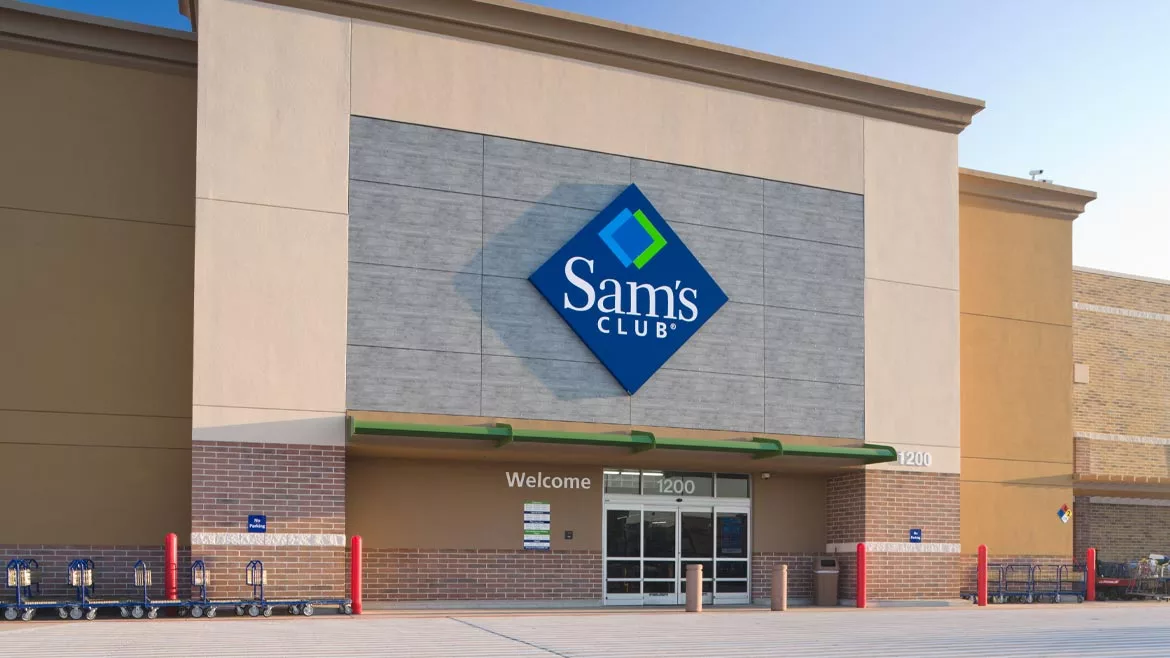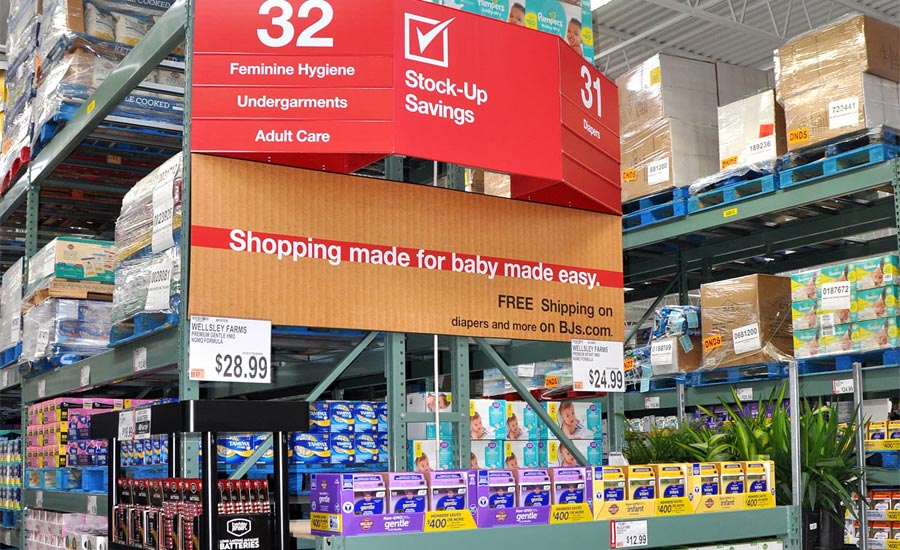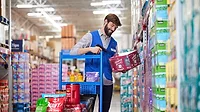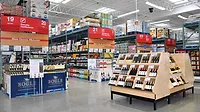Channel Strategies
Club stores conquer through curation
Members expect deals on desirable bulk items, fuel and more

From 2015 to 2021, America Ferrera and Ben Feldman played Amy and Jonah in “Superstore,” a workplace comedy about the adventures of working in a St. Louis-based box chain store. The NBC sitcom followed Amy, Jonah and their coworkers at Cloud 9, a fictional big-box store.
Big-box and club stores, like the imaginary Cloud 9, have been popular since the mid-1970s. They differ from traditional department and chain stores due to their large size, buy-in-bulk products and membership requirements. These stores cut costs in certain ways, like having customers choose items directly off of pallets. Costco, Sam’s Club and BJ’s Wholesale Club are three of the biggest club stores in the United States — although Costco and Sam’s Club operate in other countries also.
“Club stores have a more limited assortment than many grocery or mass/supercenter stores, but club members feel the assortment has been vetted and curated for them,” says Joan Driggs, vice president of thought leadership at Chicago-based Information Resources Inc. (IRI). “They feel confident in the quality and they also feel they’re getting a bargain because they’re buying in bulk.”
Driggs credits the categorization of products inside club stores as a draw for consumers.
“Because the club channel excels at curation, products either do well or they’re out,” Driggs says. “I would think products available in large quantities that also have shelf-life would do well, but I don’t have data on this. Consider coffee, particularly K-cups, bottled water, sports drinks and beverage alcohol. Club stores also have specialty beverages, like kombucha.”
In the U.S., the market for club stores is worth $400 billion, with Seattle-based Costco and Sam’s Club, a division of Benton, Ark.-based Walmart Inc., having combined sales of $140 billion, according to Fact.MR. Costco has the highest sales, but Sam’s Club has a larger number of stores, with nearly 600 locations in the United States. Costco has about 575 locations in the states, and BJ’s Wholesale Club, Westborough, Mass., has just over 200 stores. BJ’s has plans to expand to its 18th state soon: Indiana.
“We’ve seen tremendous success in growing our footprint over the last several years, both in our core east coast communities as well as in new markets like the greater Detroit and Pittsburgh areas,” Bill Werner, BJ’s executive vice president of strategy and development, said in a statement. “Our expansion into the greater Indianapolis and Columbus markets allows us to bring the value of our membership to these new communities we look forward to serving.”
Aside from the Noblesville, Ind. club, BJ’s is expanding with another store in New Albany, Ohio, Wayne, N.J., and Midlothian, Va. The wholesale club is a “leading operator” of membership warehouse clubs in the Eastern United States, it says.

Image courtesy of BJ’s Wholesale Club
Looking back and ahead
IRI’s Driggs reports that the coronavirus pandemic actually helped club store performance.
“The club channel benefited from the pandemic in that many households used their stimulus money to purchase memberships, and even these members have stuck with their programs,” Driggs explains. “Across all channels, club is showing both dollar percent sales change (5.5%) and unit sales gain (2.2%) versus a year ago. In addition, trips to club channel are up 1.6% versus a year ago, the highest of any channel tracked — grocery, club, drug, mass/supercenter, dollar, health/vitamin.”
The statistics cited by Driggs were reported by IRI in the 52 weeks ending April 17. She expects the club store channel will continue to perform well this year, even “given the current situation with high inflation.”
“Not only do many offer gas at lower prices than national brands, which can be a trip driver, they also offer the value of buying more for less across the vast store,” she says. “Even smaller households that you wouldn’t consider optimal club members like the curation and level of trust that club stores deliver.”
Appealing to the masses
Although Generation X and baby boomers “over index” in their preference for club stores, according to Driggs, there still is hope for the stores to attract younger generations.
“Gen Z and younger millennials are least likely to shop at these stores, likely because Gen Zs, in particular, might still live with their parents or their households are small with roommates,” she says. “Other membership clubs allow multiple members, say up to five, and they don’t have to live in the same household. This might be appealing to younger shoppers or households that want to share in bulk purchases.”
Most club stores have mobile apps. The Sam’s Club mobile app was credited for helping the store grow amid the pandemic. Research from Apptopia shows that the Walmart-owned club’s app was downloaded 9.6 million times in 2020, compared with apps from competitors Costco and BJ’s Wholesale Club, which only saw 4.9 million and 3.1 million downloads, respectively.
In 2020, Sam’s Club introduced Scan & Go, allowing members to scan items as they browse the club and avoid checkout lines. A gas pump version of the app, called Scan & Go Fuel, also was made available at 70 Sam’s Club gas stations. Club Plus members can utilize free shipping and quick reorders through the Scan & Go app as well.
Sam’s Club recently expanded the accessibility of its Scan & Go mobile app to allow for EBT customers.
Expanding the accessibility of the successful app, Sam’s Club recently allowed for EBT SNAP checkout through Scan & Go. As of March, Sam’s Club was reported that they were “the first retailer to support digital EBT payment for physical in-club transactions.”
Many apps also share coupons and details regarding current sales promotions. Other club apps work to reduce effort on the member’s side, like Costco’s mobile app, Driggs notes.
“The Costco app offers a digital version of the membership card, so it’s one less step for shoppers,” Driggs says. “Costco also has coupons available for receipt scanning. Along with online pickup and home delivery, warehouse clubs are offering services that shoppers have come to rely on from other channels.”
Looking for a reprint of this article?
From high-res PDFs to custom plaques, order your copy today!






